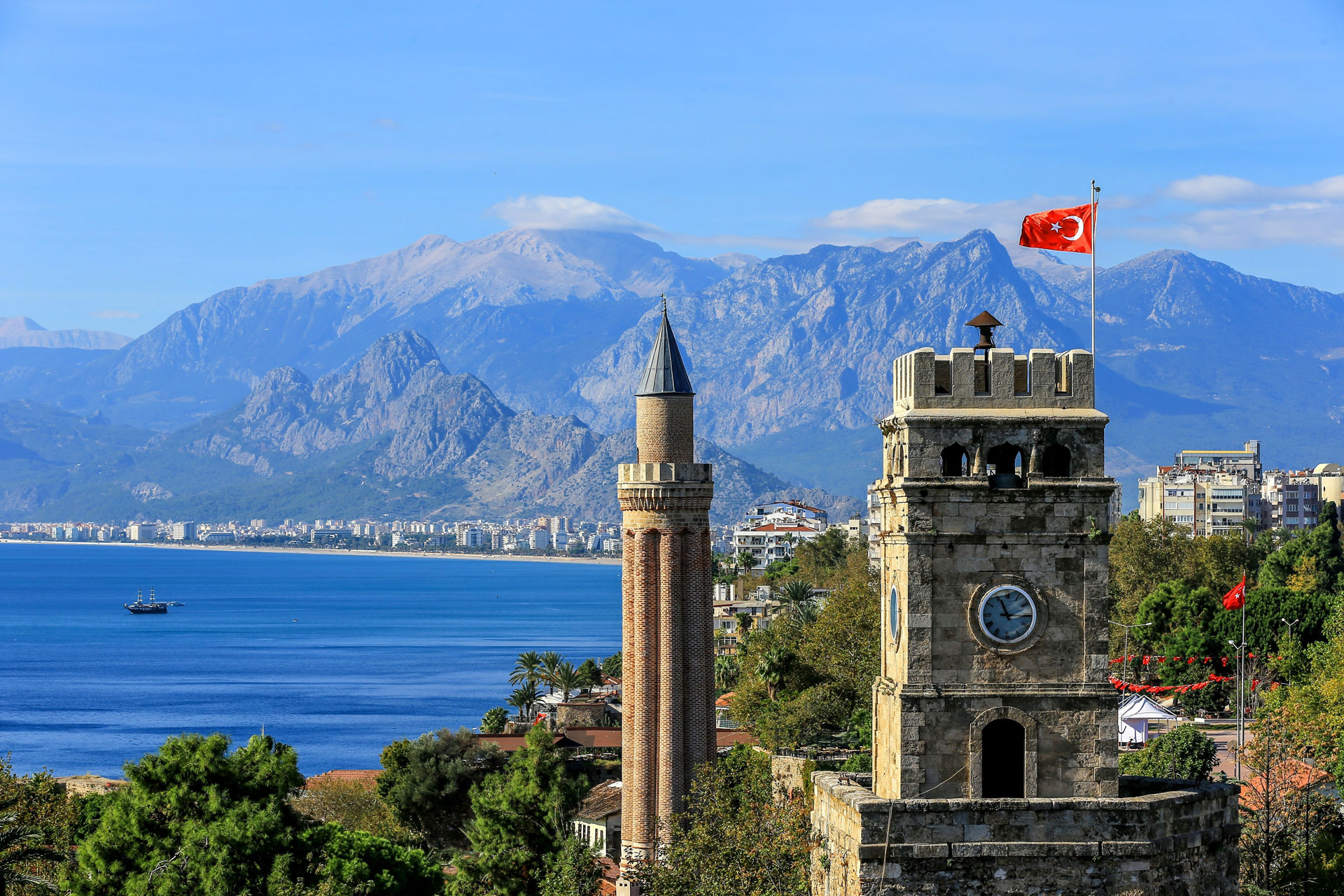
Antalya, Turkey's principal holiday resort within the Mediterranean region (ancient Pamphylia), is an enticing town with shady palm-lined avenue a prize-winning harbour on the Mediterranean. In the picturesque old quarter, Kaleici, narrow winding streets and previous wood homes butt the ancient town walls. Lately, many foreigners have bought (and continue to buy) property in and around Adalia for his or her holidays or for the retirement. It became a popular space particularly for the German and Russian nationals. At the winter months its population is around two million, but in the summer times it doubles.
 Fluted minaret in AntalyaSince its creation in the second century B.C. by Attalus II, a king of Pergamon, who named the town Attaleai once himself, Antalya has been ceaselessly colonised. The Romans, Byzantines and Seljuks in turn occupied the town before it came beneath Ottoman rule. The elegant fluted minaret of the Yivli Minareli masjid within the center of the town designed by the Seljuk swayer Alaeddin Keykubat in the thirteenth century has become the Antalya's image. The Karatay Medrese (theological college) in the Kaleici district, from the same period, exemplifies the best of Seljuk stone carvings. The two most vital Ottoman mosques within the town area unit the sixteenth century Murat Pasa masjid, remarkable for its tile decoration, the 18th century Tekeli Mehmet Pasa masjid. Neighboring the marina, the attractive late nineteenth century Iskele masjid is designed of cut stone and assault four pillars over a formation. The Hidirlik Kulesi (tower) was probably originally made as a tower in the second century. Today a church, the Kesik Minaret masjid attests to the city's long history in its succession of Roman, Byzantine, Seljuk and Ottoman renovations. When Emperor Publius Aelius Hadrianus visited Adalia in one hundred thirty A.D. a beautifully embellished 3 arched gate was designed into the town walls in his honor.
Fluted minaret in AntalyaSince its creation in the second century B.C. by Attalus II, a king of Pergamon, who named the town Attaleai once himself, Antalya has been ceaselessly colonised. The Romans, Byzantines and Seljuks in turn occupied the town before it came beneath Ottoman rule. The elegant fluted minaret of the Yivli Minareli masjid within the center of the town designed by the Seljuk swayer Alaeddin Keykubat in the thirteenth century has become the Antalya's image. The Karatay Medrese (theological college) in the Kaleici district, from the same period, exemplifies the best of Seljuk stone carvings. The two most vital Ottoman mosques within the town area unit the sixteenth century Murat Pasa masjid, remarkable for its tile decoration, the 18th century Tekeli Mehmet Pasa masjid. Neighboring the marina, the attractive late nineteenth century Iskele masjid is designed of cut stone and assault four pillars over a formation. The Hidirlik Kulesi (tower) was probably originally made as a tower in the second century. Today a church, the Kesik Minaret masjid attests to the city's long history in its succession of Roman, Byzantine, Seljuk and Ottoman renovations. When Emperor Publius Aelius Hadrianus visited Adalia in one hundred thirty A.D. a beautifully embellished 3 arched gate was designed into the town walls in his honor.Near the dock the 2 towers flanking the gate and alternative field of the walls till now arise. Clock tower in Kalekapisi Square was additionally a part of the previous city's fortifications.
No comments:
Post a Comment